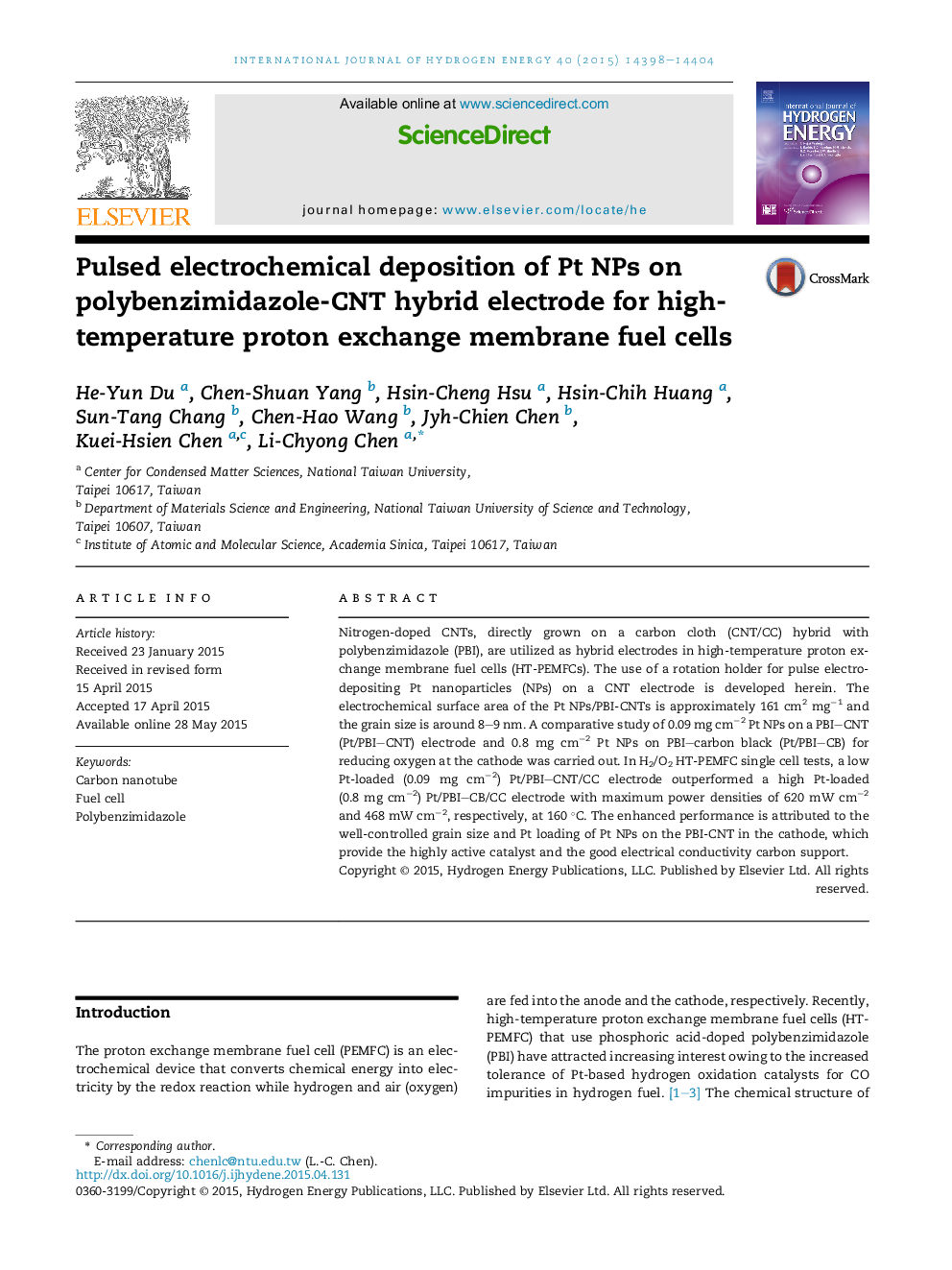| Article ID | Journal | Published Year | Pages | File Type |
|---|---|---|---|---|
| 1269171 | International Journal of Hydrogen Energy | 2015 | 7 Pages |
•Directly grown CNTs as electrode supporting material act as a low-resistance pathway for electron transfer.•The rotation holder for pulse electrodepositing method is developed for highly catalytic Pt NPs on a CNT electrode.•Pt/PBI-CNT has high electrochemical activity which contributed well-controlled particle size of Pt NPs.
Nitrogen-doped CNTs, directly grown on a carbon cloth (CNT/CC) hybrid with polybenzimidazole (PBI), are utilized as hybrid electrodes in high-temperature proton exchange membrane fuel cells (HT-PEMFCs). The use of a rotation holder for pulse electrodepositing Pt nanoparticles (NPs) on a CNT electrode is developed herein. The electrochemical surface area of the Pt NPs/PBI-CNTs is approximately 161 cm2 mg−1 and the grain size is around 8–9 nm. A comparative study of 0.09 mg cm−2 Pt NPs on a PBI–CNT (Pt/PBI–CNT) electrode and 0.8 mg cm−2 Pt NPs on PBI–carbon black (Pt/PBI–CB) for reducing oxygen at the cathode was carried out. In H2/O2 HT-PEMFC single cell tests, a low Pt-loaded (0.09 mg cm−2) Pt/PBI–CNT/CC electrode outperformed a high Pt-loaded (0.8 mg cm−2) Pt/PBI–CB/CC electrode with maximum power densities of 620 mW cm−2 and 468 mW cm−2, respectively, at 160 °C. The enhanced performance is attributed to the well-controlled grain size and Pt loading of Pt NPs on the PBI-CNT in the cathode, which provide the highly active catalyst and the good electrical conductivity carbon support.
Graphical abstractThe well-controlled Pt nanoparticles on a CNT electrode (Pt/PBI-CNT) by pulse electrodepositing provide not only highly active catalyst but also a low-resistance electron-transfer pathway.Figure optionsDownload full-size imageDownload as PowerPoint slide
